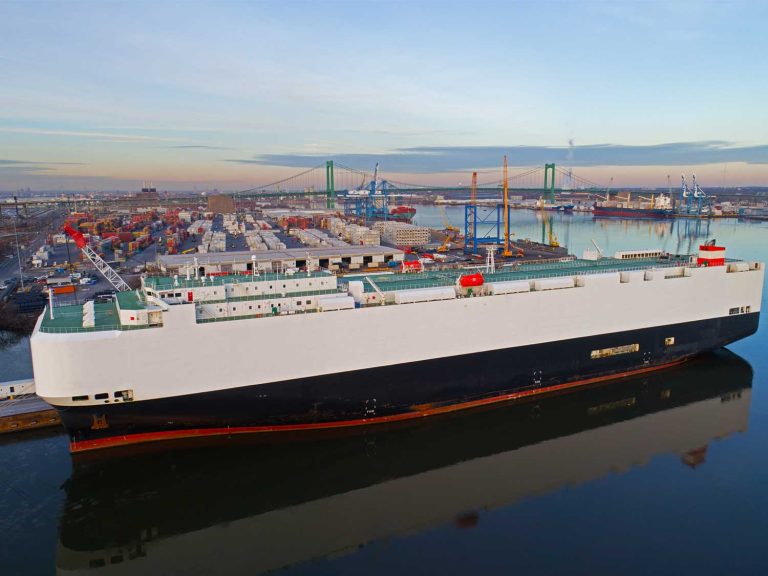
Date:
USTR Port Fee Shockwave Hits Chinese Shipping and Vehicle Carrier Sectors
The U.S. Trade Representative’s (USTR) newly imposed port fee regime is massively impacting container and roll-on/roll-off (RoRo) operators, inflating operating costs, tightening vessel capacity, and prompting warnings of severe disruption to U.S. logistics.
UPDATE 30 OCTOBER – Donald Trump and Xi Jinping have agreed to end tit-for-tat levies on each other’s shipping industries, but there is no certainty yet as to when this will take effect.
Effective 14 October, the USTR introduced port service fees applying to all Chinese-operated and Chinese-built vessels calling at U.S. ports. Chinese-operated ships face a levy of $50 per net ton on their first port call of the year, escalating annually through 2028. For vessels merely built in China but operated by foreign lines, the higher of $18 per ton or $120 per discharged container applies.
Although originally aimed at Chinese maritime dominance, the policy has ensnared a much wider range of operators, including global RoRo and vehicle-carrier fleets built in Asian shipyards. The scope extends to nearly all non-U.S.-built ships, creating a sweeping cost burden across the international car-carrier sector.
Early Impact on China-Linked Carriers
Within the first week of implementation, Chinese shipping giants Cosco and OOCL incurred more than $42 million in port fees from just 15 U.S. port calls. Based on current deployment, annual exposure for the two lines could exceed $2 billion, representing as much as 7 % of combined revenue.
While some carriers have avoided Chinese tonnage by redeploying vessels built elsewhere, many have no alternative. Post-Panamax container ships and vehicle carriers built in China but owned by global operators remain fully liable under the new rules.
RoRo Operators Face Steep Increases
The new regime has been even more damaging for vehicle and equipment carriers. The levy on all foreign-built vessels, not just those tied to China, rose from $14 to $46 per net ton, tripling the original charge announced in June. This means a large car carrier now faces about $1.2 million per port call, capped at five annual calls per vessel.
Operators such as Wallenius Wilhelmsen and Höegh Autoliners are facing unprecedented annual costs, estimated near $1 billion and $225 million respectively, which will inevitably feed through to manufacturers and exporters. The burden will be particularly heavy on automotive and heavy-equipment producers that rely on U.S.–Europe and U.S.–Asia RoRo services.
Outlook
As public consultation on further extensions of the scheme continues, the maritime industry is bracing for additional cost escalation and route restructuring. Unless revised, the USTR’s fee framework could reshape port-call economics, amplify freight volatility, and reduce U.S. competitiveness in key manufacturing export markets.
Metro’s sea freight and RoRo specialists support automotive, machinery, and project cargo shippers potentially facing rising U.S. port charges amid changing compliance requirements. With deep expertise in vehicle logistics and carrier management, we minimise disruption and optimise cost efficiency across global trade lanes. EMAIL Andrew Smith, Managing Director, to discuss tailored solutions for your automotive supply chain.
